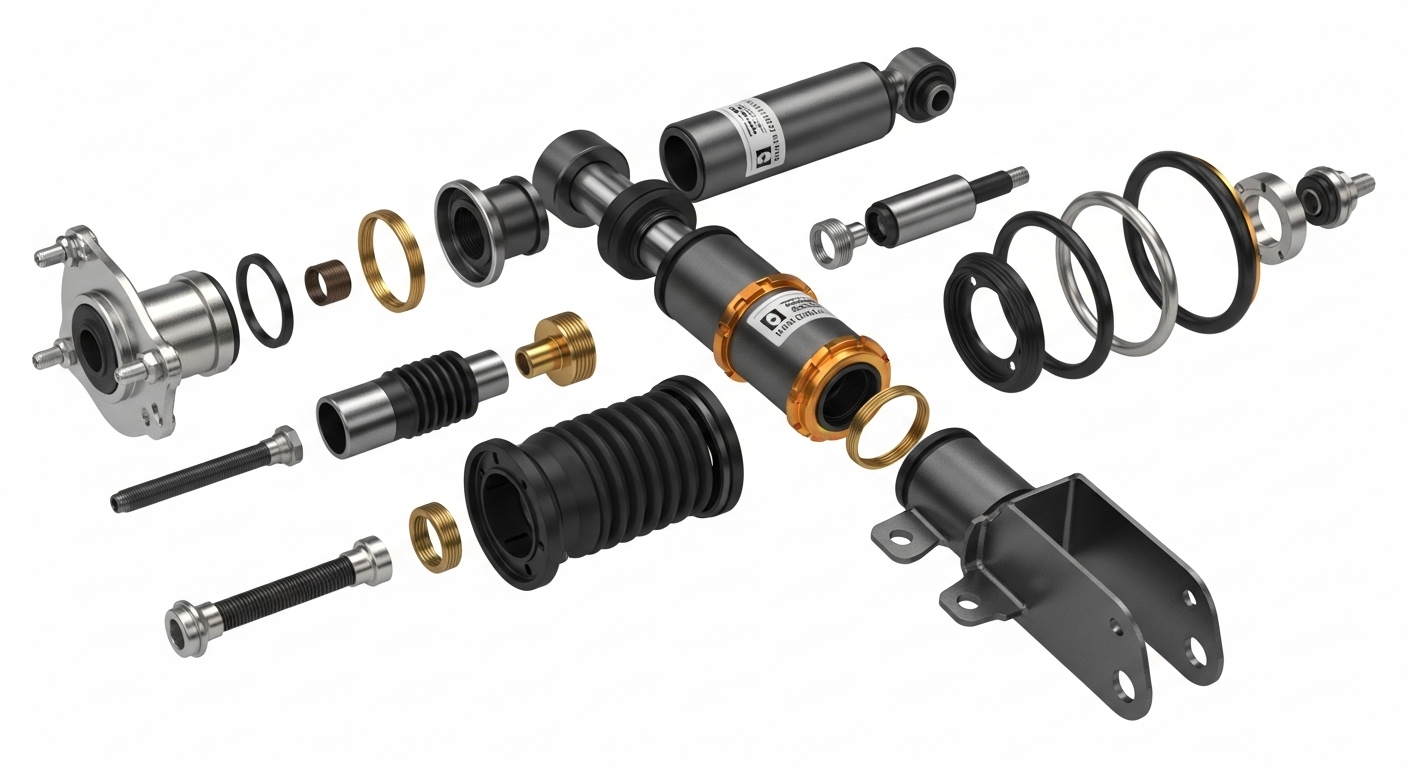Introduction to Pneumatic Casters
Pneumatic casters, known for their air-filled tire construction, offer a unique combination of durability and cushioning essential for both industrial and commercial environments. These casters excel at transporting sensitive or fragile equipment across bumpy floors and uneven terrains. The specialized design allows for precise shock absorption, a key consideration when moving expensive instruments or products that require a gentle ride. Albion casters have become a trusted choice across many sectors for those looking for reliability and versatility.
The unique cushioning effect of pneumatic casters primarily results from their air-filled tires, which act as natural buffers. This design ensures that vibrations and impacts are absorbed rather than transmitted to the equipment being carried. Such technology sets pneumatic casters apart from solid or hard-rubber alternatives, providing clear advantages in environments where load protection and operator comfort are non-negotiable priorities.
As industries modernize and emphasize safety and efficiency, pneumatic casters have become a standard component of carts, racks, and platforms. Their shock-absorbing abilities are particularly beneficial in settings where product integrity is paramount or where uneven surfaces are common. Facilities managers and OEMs frequently specify pneumatic casters as part of standard material handling and transportation solutions.
Mechanism of Shock Absorption
The heart of every high-quality pneumatic caster is its air-filled tire, typically made from durable rubber. When a cart or platform outfitted with pneumatic casters moves over a crack, bump, or debris, the tires compress and absorb incoming shocks. This action drastically reduces the transfer of vibration and jarring motion to both the load and the operator.
The air inside the tire acts like a spring, dissipating energy and mitigating peak impact forces. This compression gives pneumatic casters a distinct advantage over rigid or solid alternatives, which transmit much of the surface agitation directly to the load. The result is a smoother, more controlled ride with limited vibration—a critical factor for sensitive payloads.
Pneumatic casters are engineered for performance across various surfaces, from warehouse floors to outdoor settings. Their ability to maintain a steady, cushioned movement not only preserves the contents being transported but also reduces noise and improves operator ergonomics—even during long shifts or high-volume workflows.
Benefits in Industrial Applications
- Protection of Sensitive Equipment: Pneumatic casters are essential for transporting electronics, glass, or calibrated devices, significantly reducing the potential for damage from shock and vibration.
- Enhanced Operator Comfort: The cushioning mechanism eases the strain on personnel who move carts or platforms regularly, promoting better health and reducing the risk of musculoskeletal injuries.
- Noise Reduction: Unlike hard-tired wheels, pneumatic casters roll quietly, supporting compliance with auditory safety guidelines and making them ideal for noise-sensitive environments.
These advantages explain why many industries opt for pneumatic caster solutions in settings ranging from hospitals to electronics manufacturing plants. According to recent guidance from OSHA’s ergonomics guidelines, selecting the right caster can significantly affect operational efficiency and product safety, especially where the risk of vibration-induced failure is high.
Comparing Pneumatic and Semi-Pneumatic Casters
While pneumatic casters are unparalleled in their cushioning performance, they require ongoing attention to air pressure and potential punctures. Maintenance teams must factor in routine tire checks to ensure consistent shock absorption capabilities. Semi-pneumatic casters present a valuable alternative for environments lacking the resources or time for this level of upkeep.
Semi-pneumatic casters contain a solid rubber core with embedded air pockets, offering many of the vibration-damping benefits of pneumatic casters but with lower maintenance demands. While not as soft or forgiving on rough surfaces, they balance ride comfort and reliability, making them well-suited for medium-duty applications where uptime is critical and maintenance windows are limited.
Applications in Various Industries
Pneumatic casters are used in a wide range of sectors where protecting cargo integrity is crucial. In healthcare facilities, equipment such as mobile diagnostic devices or sensitive patient monitors relies on these casters for safe, smooth movement. Automotive manufacturers use pneumatic casters to transport parts and assemblies without risking shocks that could compromise quality assurance standards.
Electronics and laboratory environments also favor pneumatic casters, as minor vibrations can affect precision instruments or disrupt delicate processes. Their effectiveness extends to distribution centers needing silent operation or environments with frequent movement over transitions between flooring surfaces.
Maintenance Considerations
Regular inspection is vital to ensure pneumatic casters maintain their shock-absorbing capabilities. Facility teams should check air pressure at set intervals, inspect tires for abrasions or punctures, and confirm that they spin freely. Preventative measures optimize performance and extend caster and equipment lifespan, reducing overhead costs tied to premature replacements.
Simple steps, such as inflating tires to manufacturer specifications and rotating casters, can add years to their service life. Integrating these checks into routine facility maintenance helps ensure uninterrupted productivity, especially in operations relying on sensitive or high-value inventory.
Final Thoughts
Albion’s pneumatic casters are an integral part of modern material handling. They combine advanced shock absorption with practical benefits like operator comfort and noise reduction. Through proper maintenance and informed caster selection, organizations can ensure the safe and efficient movement of sensitive materials, safeguarding both equipment and workplace environments.
